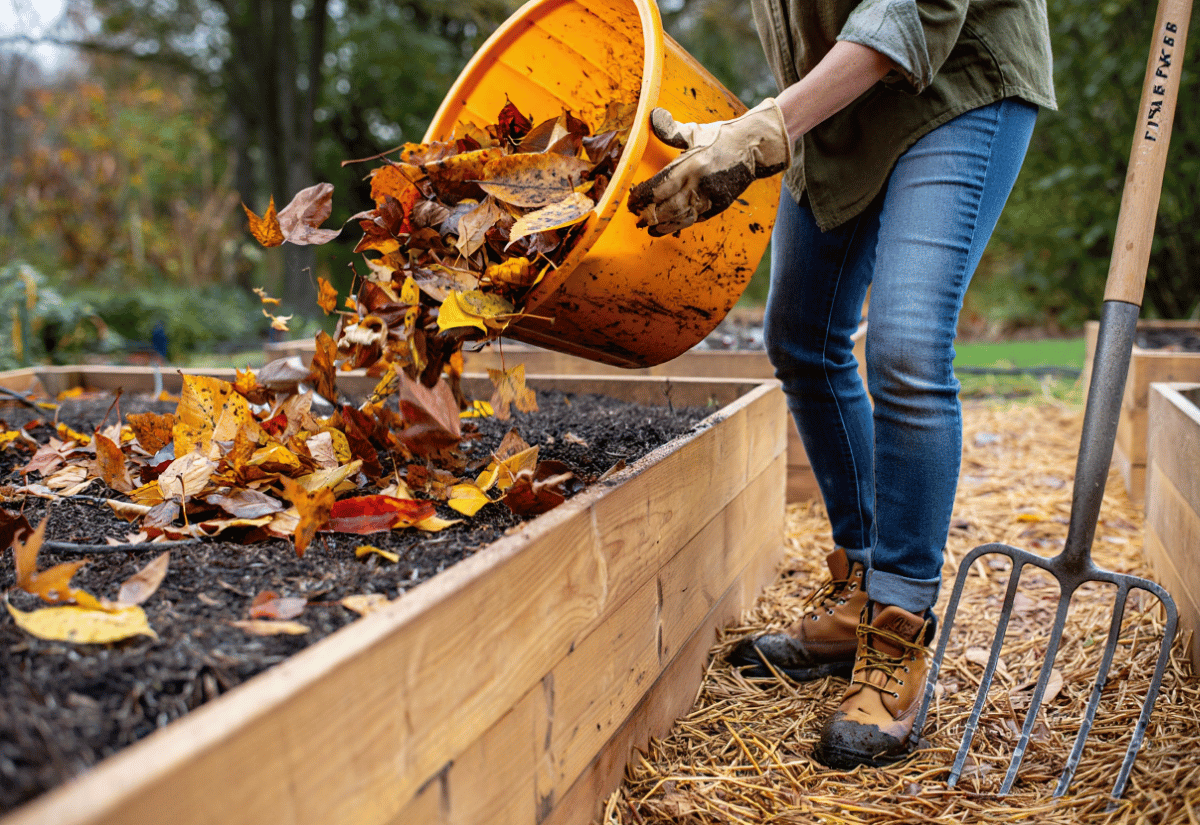
Let’s be honest—after a full season of gardening, the idea of not planting anything this fall might sound… kind of amazing. Maybe you’re short on time. Maybe you’re just ready to trade in your watering can for a cozy blanket and a mug of something warm. No judgment here.
But while you’re pressing pause on planting, your soil still needs a bit of attention. If left exposed through winter, all those rains, winds, and cold snaps can leave it depleted—like a party guest after a long night, in serious need of recovery.
The good news? It doesn’t take much to protect your soil and even improve it while it rests. A few simple steps now will make a world of difference come spring. Less work, better crops, and an earlier start to gardening? Yes, please.
So if you’re skipping the fall crops but still want a happy, healthy garden come spring—keep reading.
What Happens to Soil in Winter if You Don’t Protect It
Winter is a tough season, for us and for soil as well, if you don’t protect it.
- The heavy rains of this season will both wash away both nutrients and lower your soil’s drainage ability.
- Frozen soil in cold regions will reduce the porosity of your soil, ruining its texture, and very low temperatures “send good bacteria packing”; they die or they move deeper underground, and it will take them time to come back to the topsoil in spring.
- Heavy downpours may even cause soil erosion.
- Heavy winds too can cause soil degradation, removing organic matter, and contributing to erosion.
So, when spring comes, you will find that your land is poorer, badly drained, and there may also be changes in pH!
So, now you know the dangers, let’s see the solutions.
1. Improve Your Soil’s Drainage
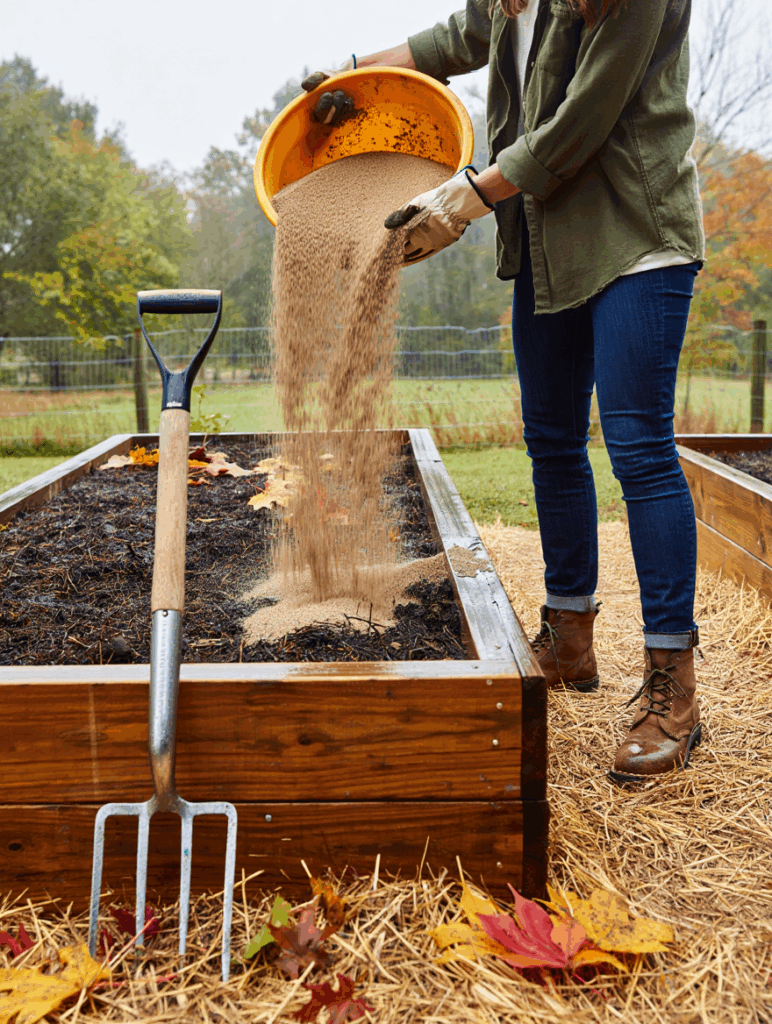
Over time, even the best garden soil can lose its ability to drain properly. Seasonal rains—especially the heavy, persistent kind—tend to wash away organic matter and compact the soil beneath the surface. This can leave roots sitting in water, which is never good news for your perennials, shrubs, or trees. In colder climates, that excess moisture can even freeze underground, causing lasting damage to root systems.
Fortunately, the fix is simple. If your soil is chalky or holds moisture a little too well, adding a layer of coarse gardening sand—about 1 or 2 inches (2.5 to 5.0 cm) —is a great way to restore drainage. Work it lightly into the top layer and you’ll help water flow more freely again. Just be sure to skip this step if your soil is already sandy, as it won’t need the help.
If you’re dealing with heavy clay soil, though, sand won’t do the trick and could even make things worse. In that case, gypsum is your go-to. It helps break up compacted clay, improving texture and drainage without disrupting the natural balance of the soil.
2. Don’t Waste Your “Leftovers”
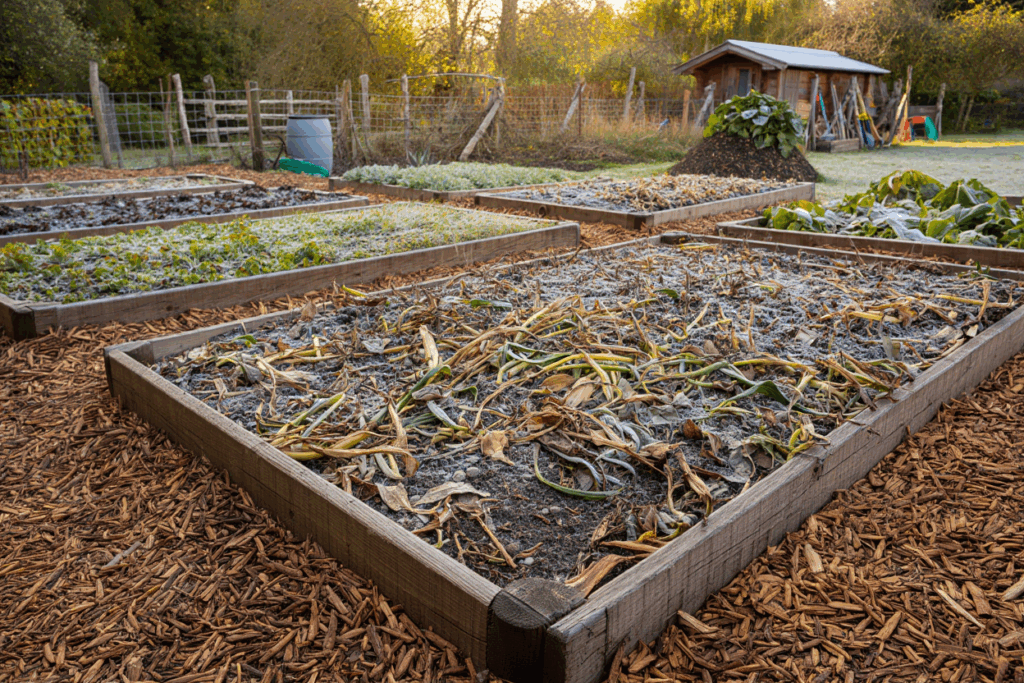
The last tomatoes have been picked, the beans are long gone, and now you’re left with a tangle of stalks, leaves, and roots—what some might call “waste”, but don’t be too quick to haul it all off. If you’ve got a compost heap, perfect—let it do its thing. But if you don’t? No need to toss it.
Instead, leave it right there in the beds. Maybe chop it up a little to help things along. Over the winter, nature will quietly go to work—frost, rain, and the countless tiny decomposers in the soil will break it all down. By spring, that raggedy plant matter will have turned into rich, fertile earth, just when your next season of planting begins.
You might be tempted to dig it in, thinking you’re speeding up the process, but…
3. Do NOT Till Your Soil!
…But tilling the soil before winter is a really bad idea! Within 24 hours you will lose 10% of the carbon present. It’s wasted time and labor and it is counterproductive. You will lose nutrients, and impact on the texture.
You can, on the other hand, aerate it, for example, with a broad fork; this will improve texture and drainage.
4. Grow Edible Groundcover Crop
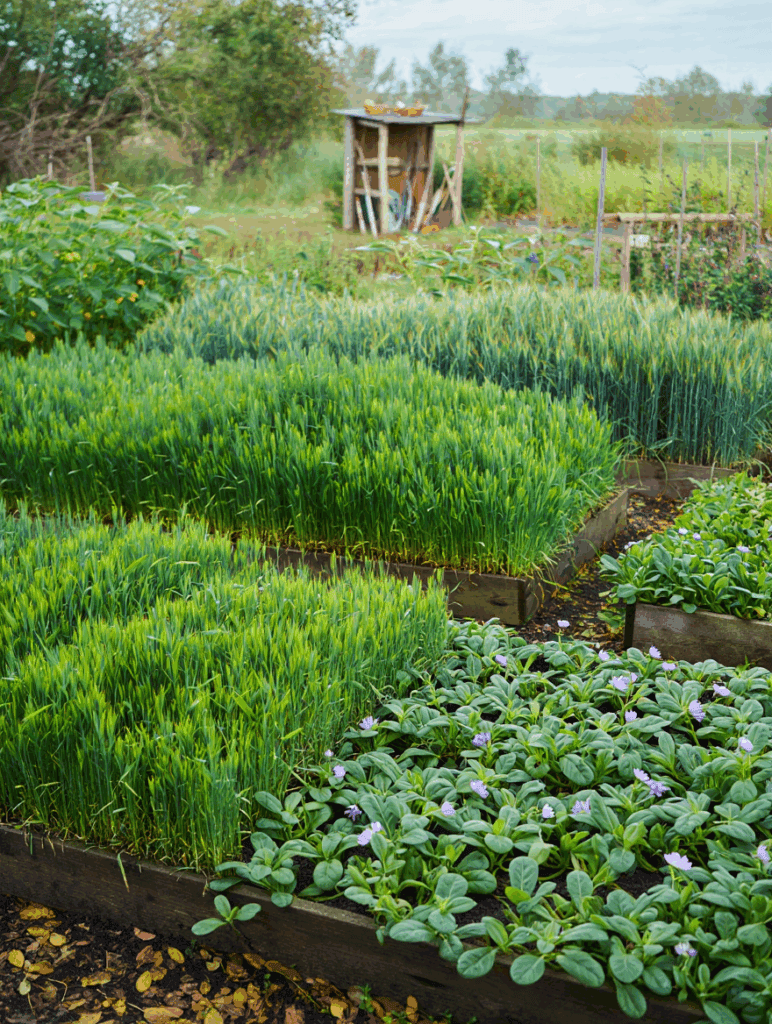
Leaving your soil bare over winter? Not a good idea. Nature never does it—and for good reason. Exposed soil loses moisture, erodes easily, and quickly becomes depleted of nutrients. Unfortunately, bare fields are common in chemical-heavy farming, but in a home garden, you can do better—and more naturally.
One of the best ways to protect and improve your soil over the colder months is by planting a winter cover crop. These plants create a living mulch, guarding against erosion, suppressing weeds, and in many cases, feeding the soil as they grow.
Some classic options include:
- Cereal rye (Secale cereale): A hardy, fast-growing option that works well in zones 3–10.
- Phacelia (Phacelia tanacetifolia): A cold-tolerant beauty with delicate, fern-like foliage; hardy in zones 7–11.
- Winter wheat (Triticum aestivum): Excellent for preventing soil loss, but best suited for zones 10–12.
But I have a better option for you, hold on…
5. Grow Green Manure
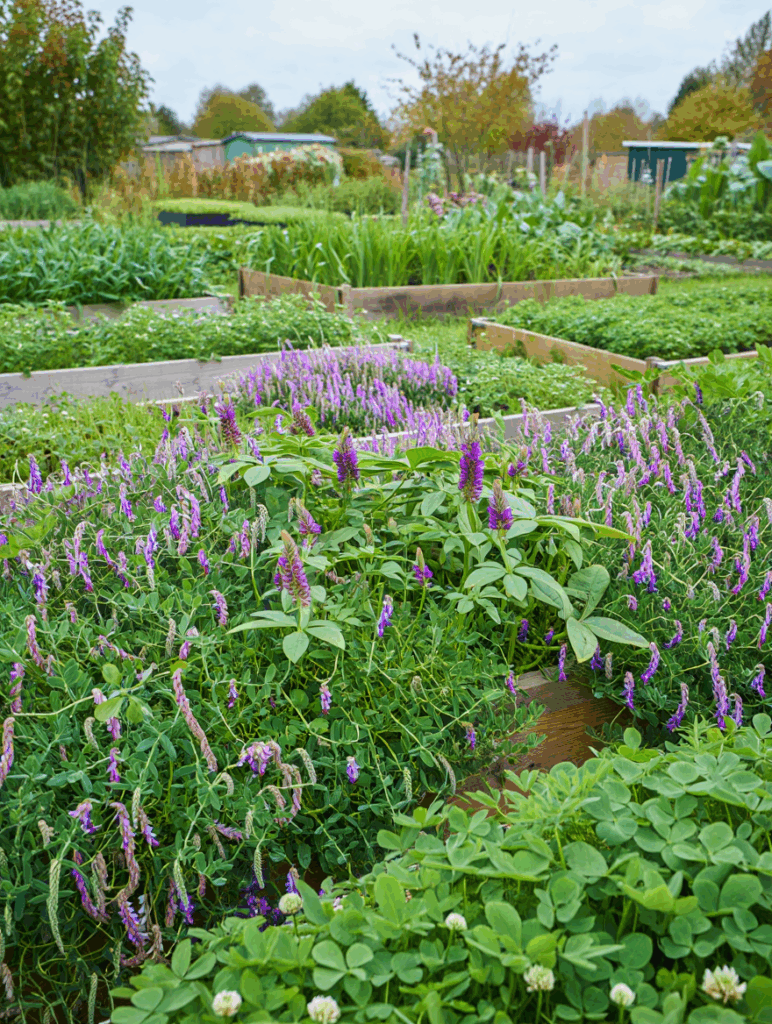
One of the easiest and most effective ways to improve your soil over winter is by planting green manure. These nitrogen-fixing cover crops don’t just preserve the nutrients in your soil—they actually enhance them, adding nitrogen naturally while your garden takes a seasonal rest. Some examples?
- Alfalfa (Medicago sativa), hardy to USDA zone 3 to 10.
- Hairy vetch (Vicia villosa), hardy to USDA zones 3 to 10.
- Crimson clover (Trifolium incarnatum), hardy to USDA zones 3 to 9.
- White clover (Trifolium repens), hardy to USDA zones 4 to 11.
- Red clover (Trifolium pratense), hardy to USDA zones 5 to 11.
Just scatter the seeds over your land, and any of these cover crops will grow strong with basically no care, apart from watering when young, and only if there is a dry spell.
Alternatively, ok, you don’t want to cultivate your land, but if you have some time, you could just plant two crops, and, if you don’t harvest anything, they will still feed your soil over winter:
- Fava beans (Vicia faba), hardy to USDA zone 6 to 12, and you can harvest it in April.
- Austrian winter peas (Pisum sativum var. arvense), with very deep roots that prevent compacting, and hardy to USDA zones 6 to 10.
6. Mulch!
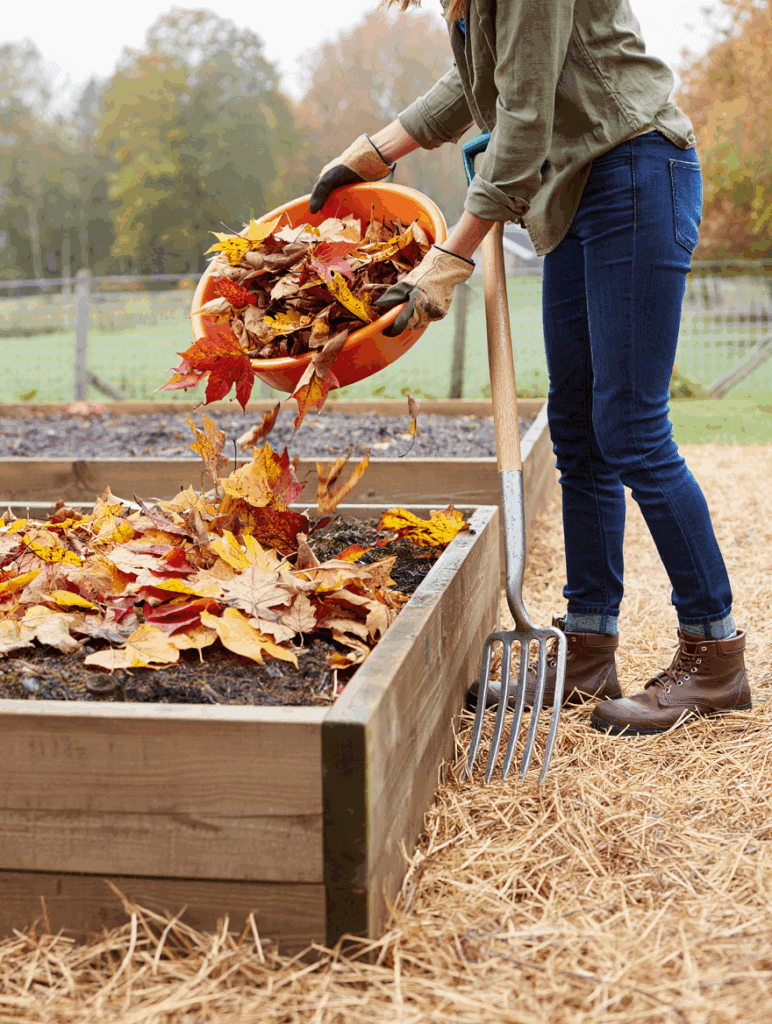
Another way to keep your soil covered is to mulch it, of course. It will also add nutrients to your land, as it decays, especially if you choose a type that decays fast. In a back garden, you won’t need to use expensive wood chips, so you don’t need to spend much (if anything at all).
Let’s see some good mulch for your soil to use in winter, and see what they can give to your garden…
- Straw is cheap and it will keep your soil warm, avoiding ground frost, preserving nutrients and yielding some as well.
- Leaves are great to feed the soil, and they promote the growth of mushrooms and mycorrhizae!
- Carboards are great to suppress weeds, which tend to grow if you leave your soil uncovered, and you can get them for free.
Of course, you can use these in any combination…
7. Use Fresh Manure to Fertilize Your Soil
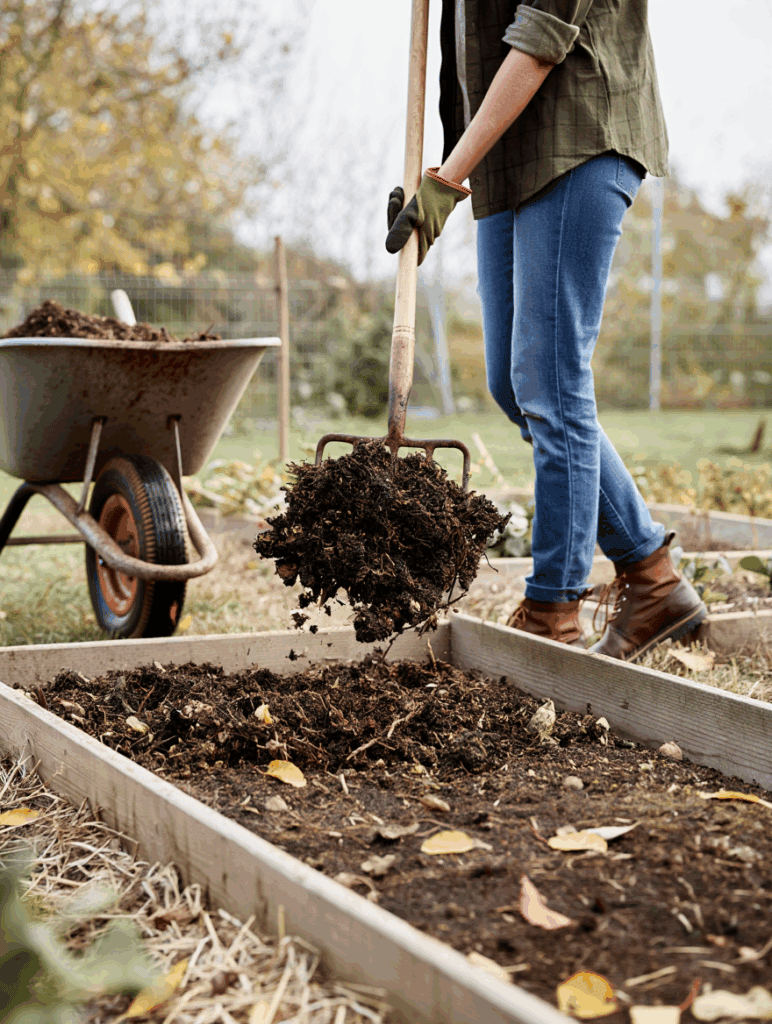
If you are not growing any crops, it’s no use spreading compost now; it will have released all its nutrients before spring arrives, and you may end up fertilizing weeds! On the other hand, fresh manure takes 3 to 4 months to be ready to be dug into the soil.
It is much cheaper than well-rotted manure, ready for crops, and winter is the best time to use it, especially if you are not cultivating your land. In fact, you will often see it on barren fields in this season.
“But it stinks,” you will say; yes, it does, but if you spray water and vinegar on it, within a few hours, the smell will disappear! Here’s a little secret for you.
8. Buy Worms and Host Them on Your Land!

Do you have 10 dollars to spare? Buy some worms! Or you can pick them out when they surface on rainy days when you take a stroll near your home – just go out with a little plastic bag. Then of course, put them on your land.
Worms will multiply and produce lots of worm castings over winter, fertilizing your land for spring. They will be safer, warmer, better fed and happier if you have covered your land, otherwise they may suffer or freeze…
9. Remove Logs and Wood from Your Land
You’ve done all this work to keep your soil healthy—maybe added compost, planted cover crops, all that good stuff. But there’s one thing that might still be messing things up without you realizing it: old logs and branches lying around.
I know, it seems like they’d help, right? Like they’re just slowly breaking down and feeding the soil. But actually, when wood breaks down, it pulls nitrogen from the soil as it decomposes. That’s nitrogen your plants need—so it’s not doing your garden any favors.
Best thing to do? Pick up any leftover wood—logs, sticks, old branches—and put it to use somewhere else. Burn it in the fireplace, save it for next year, or use it for garden projects like stakes or trellises. Just don’t leave it sitting out on your garden beds.
10. Place Some Wind Barriers
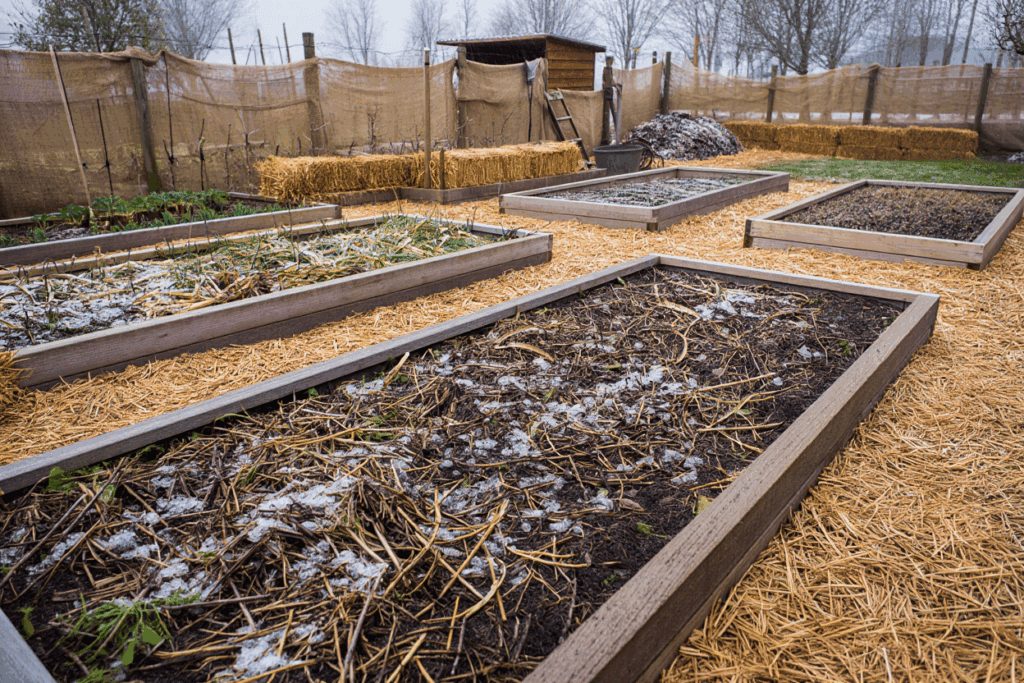
If you live in a windy place and your land is exposed, place some wind barriers. Straw bales are quite common and easy to use. Alternative are snow fences (plastic or wood), burlap screens, reed walls, or even a dense net attached to your fence.
Or you can be creative…
And Finally… Relax!
And now, time for a cup of tea. If you don’t want to plant crops on your land in fall, and give your soil (and yourself) a break over winter, you now know what you need to do. You don’t need to take all 10 measures, of course, pick and choose according to your needs, means and inclination.
Good rest!

Written By
Amber Noyes
Amber Noyes was born and raised in a suburban California town, San Mateo. She holds a master’s degree in horticulture from the University of California as well as a BS in Biology from the University of San Francisco. With experience working on an organic farm, water conservation research, farmers’ markets, and plant nursery, she understands what makes plants thrive and how we can better understand the connection between microclimate and plant health. When she’s not on the land, Amber loves informing people of new ideas/things related to gardening, especially organic gardening, houseplants, and growing plants in a small space.
